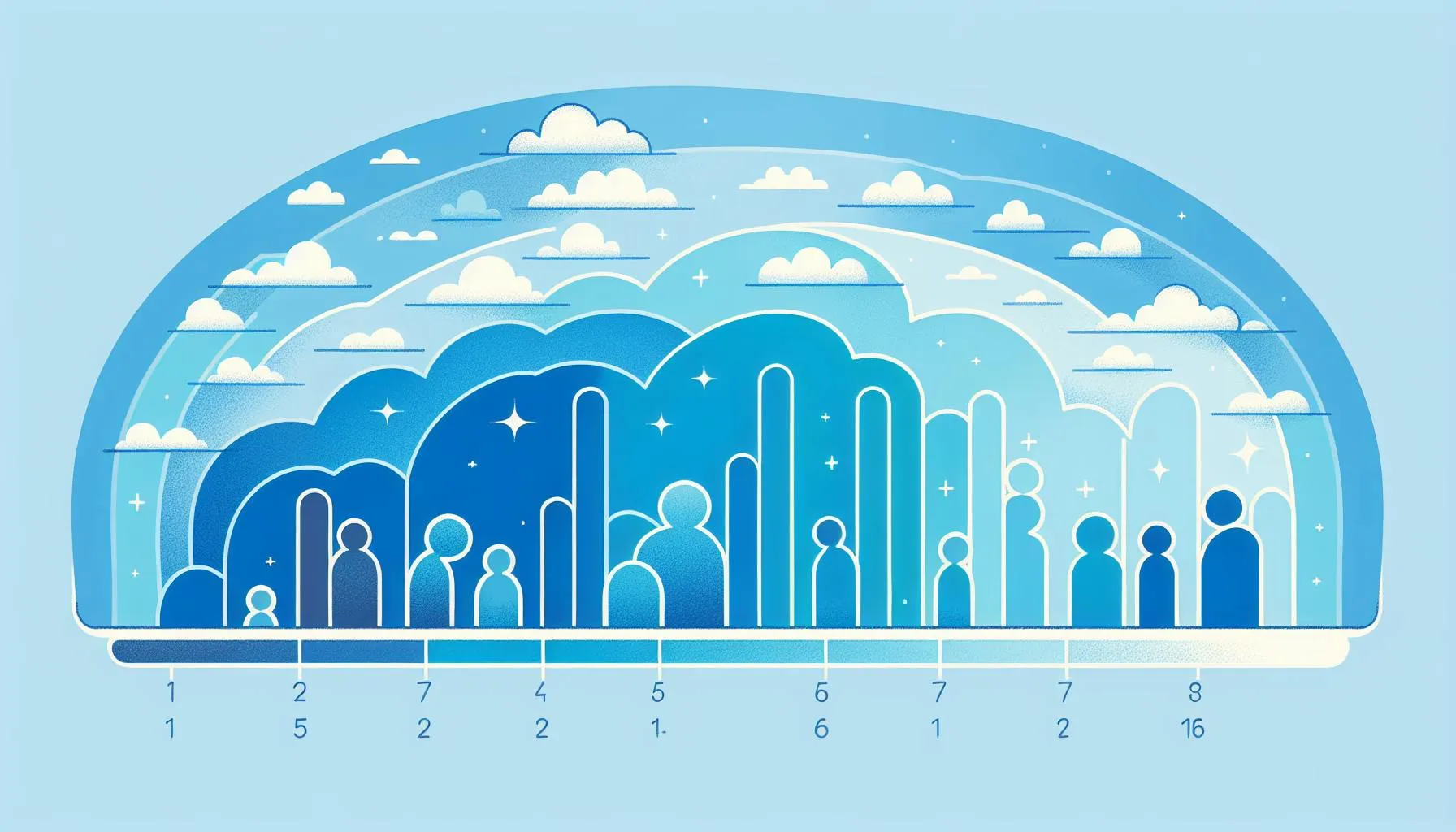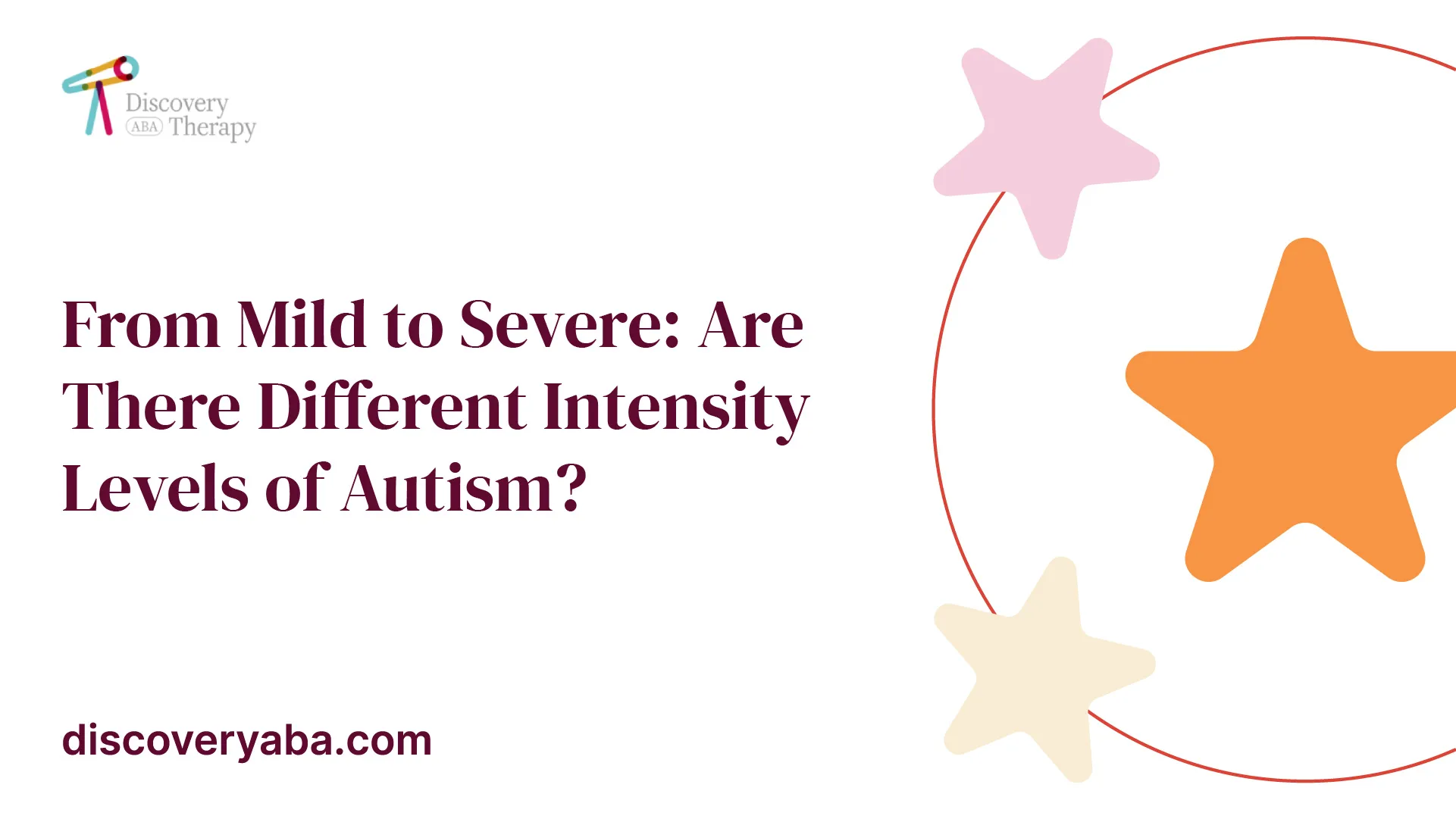From Mild to Severe: Are There Different Intensity Levels of Autism?
Unveiling the levels of autism: Discover the spectrum nature and tailored interventions for different intensities of autism.

Understanding Autism Spectrum Disorder
To comprehend the different levels of autism, it is crucial to first understand what Autism Spectrum Disorder (ASD) is and its spectrum nature.
What is Autism Spectrum Disorder?
Autism Spectrum Disorder is a developmental disability that affects how individuals perceive the world and interact with others. It is important to note that ASD is a spectrum condition, meaning that while all individuals with autism share certain difficulties to varying degrees, the way it affects them can differ significantly. Every person with autism is unique.

The Spectrum Nature of Autism
The term "spectrum" in Autism Spectrum Disorder signifies the wide range of symptoms, skills, and levels of impairment or disability experienced by individuals with autism. This spectrum nature exists because each person with autism has their own unique combination of strengths and challenges. No two individuals with autism are exactly alike.
The spectrum encompasses a broad range of abilities and challenges. Some individuals with autism may need little to no support in their daily lives, while others may require assistance from a parent, carer, or even a team of professionals. The level of support necessary varies from person to person, depending on the specific challenges they face.
It is essential to understand that the terms "high-functioning autism" and "low-functioning autism" are sometimes used to distinguish individuals who require less or more support. However, these terms are controversial due to the potential for stigma and oversimplification of the experiences of individuals with autism. The focus should be on recognizing the unique strengths and challenges of each individual rather than labeling them based on functioning levels.
While autism is a spectrum that encompasses a wide range of experiences, it is possible to differentiate between different levels of severity. Classifications of autism severity help determine the level of support necessary for an individual and guide intervention and support strategies. These levels of autism severity will be explored in the following section.
Levels of Autism
Autism Spectrum Disorder (ASD) is a complex neurodevelopmental condition that manifests differently in individuals. The severity of ASD is based on the level of support an individual needs due to challenges in social communication, restricted interests, and repetitive behaviors. The three levels of support, as defined by the DSM-5 (Diagnostic and Statistical Manual of Mental Disorders, 5th edition), are Level 1, Level 2, and Level 3.
Level 1: Requiring Support
Level 1 ASD indicates that individuals with autism require some support on a regular basis across different settings. This level is considered to be mild to moderate ASD. People with Level 1 autism can typically live independently, hold jobs, and interact socially, but they may still have difficulty with social cues.
Level 2: Requiring Substantial Support
In Level 2 ASD, individuals require substantial support, showing more pronounced deficits in social communication. They may demonstrate less interest in initiating social interactions and display more severe deficits in verbal and nonverbal social communication skills. Those at Level 2 may have a more challenging time with daily living tasks and social interactions.
Level 3: Requiring Very Substantial Support
Level 3 ASD is characterized by individuals needing very substantial support due to severe deficits in social communication. They may engage in minimal social interactions and have severe impairments in verbal and nonverbal communication skills. Individuals with Level 3 autism are more severely impacted and may require a higher level of support and assistance in daily living activities.
The three different levels of autism are used to group the varying needs and abilities of individuals with autism. They provide healthcare providers with a framework to understand the level of support required and tailor treatments and services accordingly. It's important to note that these levels replace previous diagnostic labels like Asperger's syndrome, autistic disorder, and pervasive developmental disorder-not otherwise specified (PDD-NOS).
Determining the appropriate severity level of ASD in individuals is crucial for developing personalized treatment plans and support services to address their specific needs and challenges. Comprehensive evaluations conducted by healthcare providers play a vital role in assessing the level of support required, ensuring individuals receive the appropriate interventions to help them thrive and reach their fullest potential.
Diagnostic Criteria for Autism
To better understand the different levels of autism, it's important to explore the diagnostic criteria for Autism Spectrum Disorder (ASD) as outlined in the DSM-5.
DSM-5 Criteria for Autism Spectrum Disorder
The diagnostic criteria for Autism Spectrum Disorder (ASD) is defined by two core features: persistent deficits in social communication and social interaction across multiple contexts, and restricted, repetitive patterns of behavior, interests, or activities. These criteria help healthcare providers determine if an individual meets the criteria for an ASD diagnosis.
The severity of ASD is based on the level of support an individual needs due to challenges in social communication, restricted interests, and repetitive behaviors. The DSM-5 introduced three levels of support to better capture the varying abilities and support needs of individuals with autism. These levels are:
Evaluating Autism Severity
- Level 1: Requiring Support - Level 1 ASD indicates that individuals need help with social interactions and support that may be needed from time to time. It is considered to be mild to moderate ASD.
- Level 2: Requiring Substantial Support - In Level 2 ASD, individuals require substantial support, showing more pronounced deficits in social communication. They may demonstrate less interest in initiating social interactions and display more severe deficits in verbal and nonverbal social communication skills.
- Level 3: Requiring Very Substantial Support - Level 3 ASD is characterized by individuals needing very substantial support due to severe deficits in social communication. They may engage in minimal social interactions and have severe impairments in verbal and nonverbal communication skills.
The severity levels in the DSM-5 were designed to replace classic diagnostic labels like Asperger's syndrome, autistic disorder, and pervasive developmental disorder-not otherwise specified (PDD-NOS). Instead, they aim to provide more accurate and individualized information for healthcare providers to tailor treatments and services to each person's unique needs.
It is important for healthcare providers to conduct comprehensive evaluations to determine the appropriate severity level of ASD in individuals. This process involves assessing social communication skills, behavioral patterns, and the level of support required across various settings. These evaluations help guide the development of personalized treatment plans and support services tailored to the specific needs and challenges of individuals with autism.
Understanding the severity levels of autism allows healthcare providers to provide appropriate interventions and support, ensuring that individuals receive the necessary resources and assistance to thrive and reach their fullest potential.
Challenges and Strengths in Autism
Autism Spectrum Disorder (ASD) is a complex condition that encompasses a wide range of symptoms, skills, and levels of impairment or disability, hence the term "spectrum". Each individual with autism is unique, and the level of support they require can vary based on their circumstances and environment. Let's explore two key areas of challenges and strengths commonly associated with autism.
Social Communication and Interactions
One of the hallmark features of autism, regardless of the level of severity, is challenges with social communication and interactions. Individuals with autism may have difficulty understanding social cues, making eye contact, initiating or sustaining conversations, and interpreting nonverbal communication. These challenges can affect their ability to form and maintain relationships, both personal and professional.
However, it's important to note that individuals with autism also possess unique strengths in social communication. Some may excel in specific areas, such as demonstrating deep knowledge or expertise in their areas of interest. Recognizing and harnessing these strengths can contribute to their overall development and quality of life.
Behavioral Differences and Impairments
Behavioral differences and impairments are another aspect commonly associated with autism. These can manifest in various ways, including repetitive behaviors, rigid adherence to routines, sensory sensitivities, and atypical reactions to environmental stimuli. These behaviors may serve as coping mechanisms or a way to regulate sensory input and manage anxiety.
While these behaviors can present challenges, it's important to approach them with understanding and support. Tailored interventions and strategies can be developed to help individuals with autism manage their behaviors and navigate their daily lives more effectively. This can include creating structured routines, providing sensory accommodations, and implementing behavioral therapies.
By recognizing the challenges individuals with autism face in social communication and interactions, as well as their unique behavioral differences, we can work towards creating a more inclusive and supportive environment. It is essential to focus on their strengths, promote acceptance, and provide appropriate interventions and support to help them thrive and reach their full potential.
Tailored Interventions and Support
Individuals with autism require personalized interventions and support to address their specific needs and challenges. Early diagnosis and intervention play a crucial role in improving communication, social skills, and overall quality of life, regardless of the level of severity on the autism spectrum. By identifying the different levels of autism, healthcare providers can develop tailored treatment plans and support services to meet the unique requirements of each individual.
Importance of Early Diagnosis and Intervention
Early diagnosis and intervention are essential for individuals with autism. The sooner autism is identified, the earlier appropriate interventions can begin. Early intervention focuses on providing support and therapies that target specific areas of development, such as communication skills, social interactions, and behavior management. Research has shown that early intervention can lead to better outcomes, increased independence, and improved long-term prognosis for individuals with autism.
By diagnosing autism at an early stage, healthcare professionals can work closely with individuals and their families to develop a comprehensive treatment plan. This plan may include various interventions, such as behavioral therapies, speech and language therapy, occupational therapy, and social skills training. The goal is to provide the necessary tools and strategies to help individuals with autism thrive and reach their full potential.
Personalized Treatment Plans and Services
Each individual with autism has unique strengths, challenges, and needs. Therefore, treatment plans and support services must be tailored to address these specific requirements. Comprehensive evaluations are conducted by healthcare providers to determine the severity level of autism spectrum disorder (ASD) in individuals. This assessment guides the development of personalized treatment plans and support services that are individualized to meet the specific needs and challenges of each person.
Treatment plans for individuals with autism typically involve a multidisciplinary approach, involving collaboration between healthcare professionals, educators, therapists, and families. These plans may include a combination of therapies, educational support, assistive technologies, and social interventions. The aim is to enhance communication skills, promote social interactions, manage challenging behaviors, and improve overall quality of life.
Support services may also include community resources, support groups, and vocational training programs to assist individuals with autism in transitioning into adulthood. These services help individuals develop necessary life skills and promote independent living.
By tailoring interventions and support to the specific needs of individuals with autism, it becomes possible to unlock their potential, facilitate their growth, and enhance their overall well-being. Understanding the spectrum nature of autism empowers individuals and their families to access the appropriate support and interventions needed to thrive.
References
Does Your Child Have An Autism Diagnosis?
Learn More About How ABA Therapy Can Help
Find More Articles
Contact us
North Carolina, Nevada, Utah, Virginia
New Hampshire, Maine
Arizona, Colorado, Georgia, New Mexico, Oklahoma, Texas
.avif)




































































































